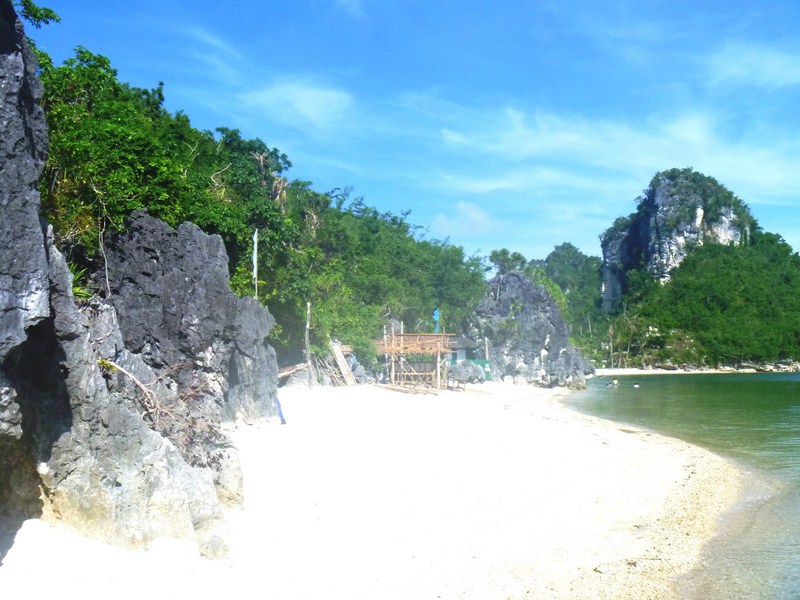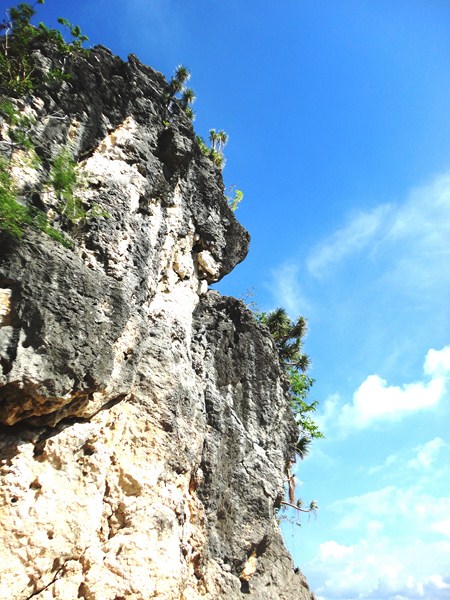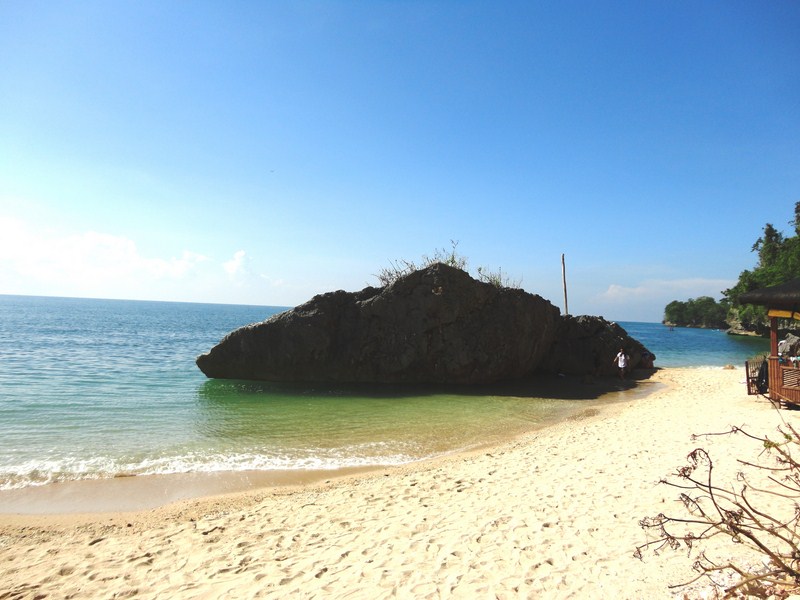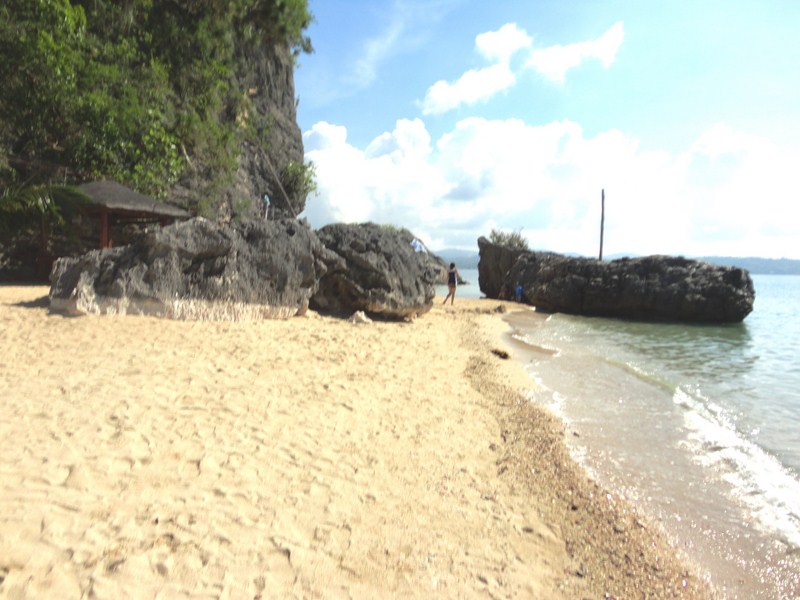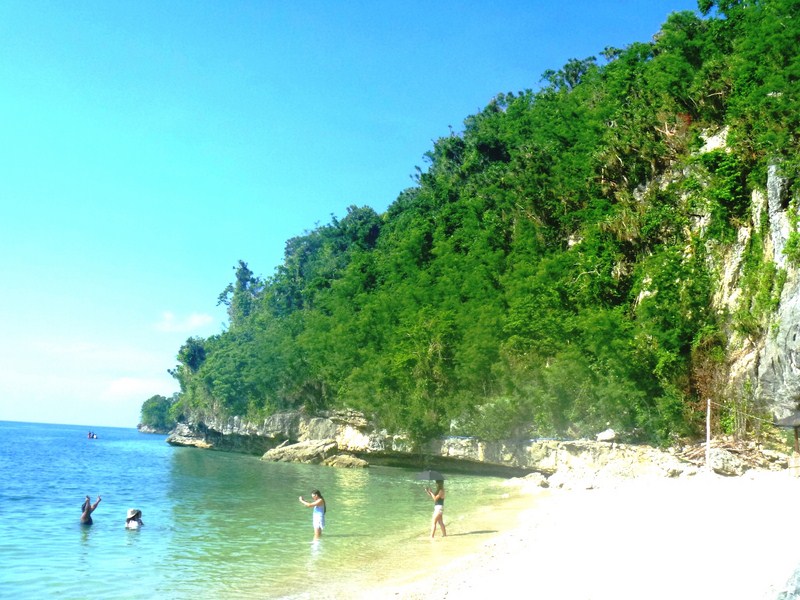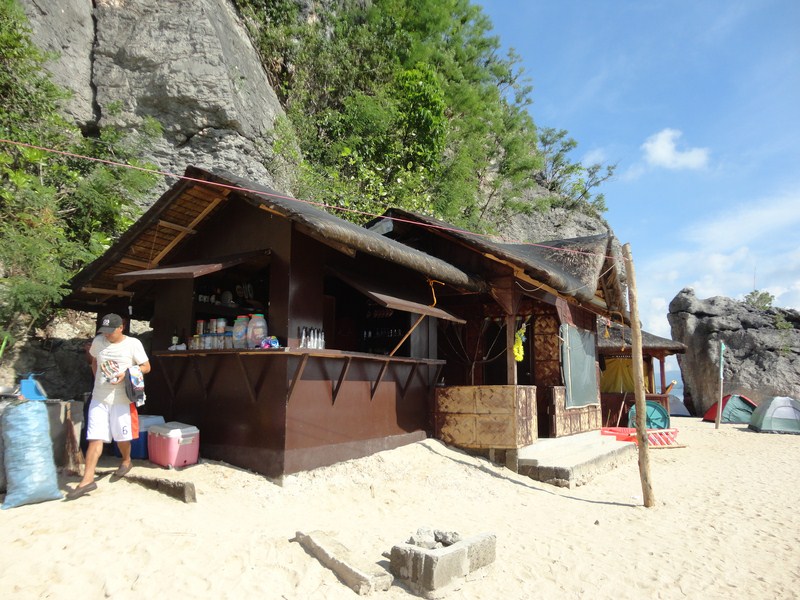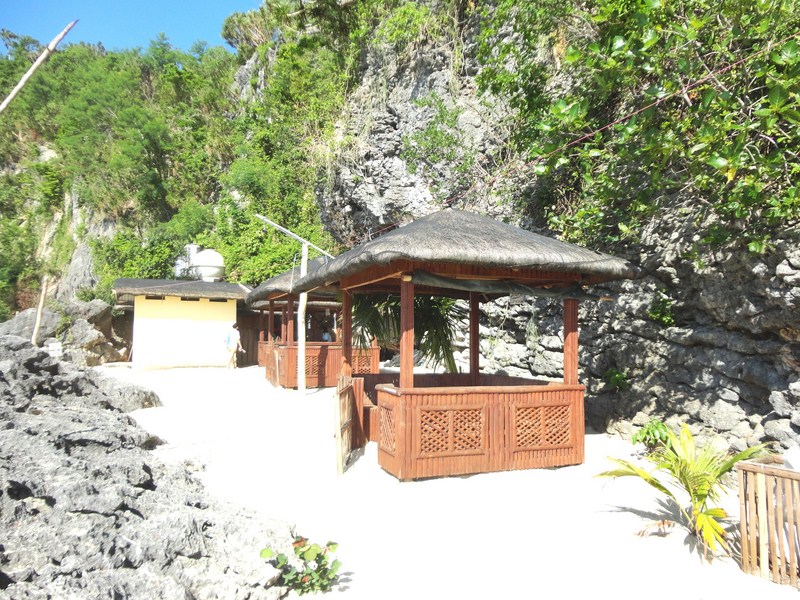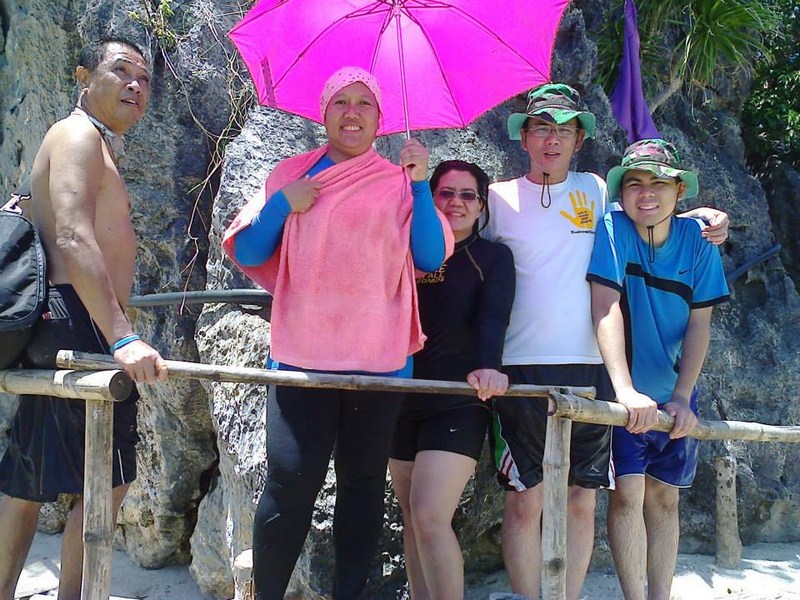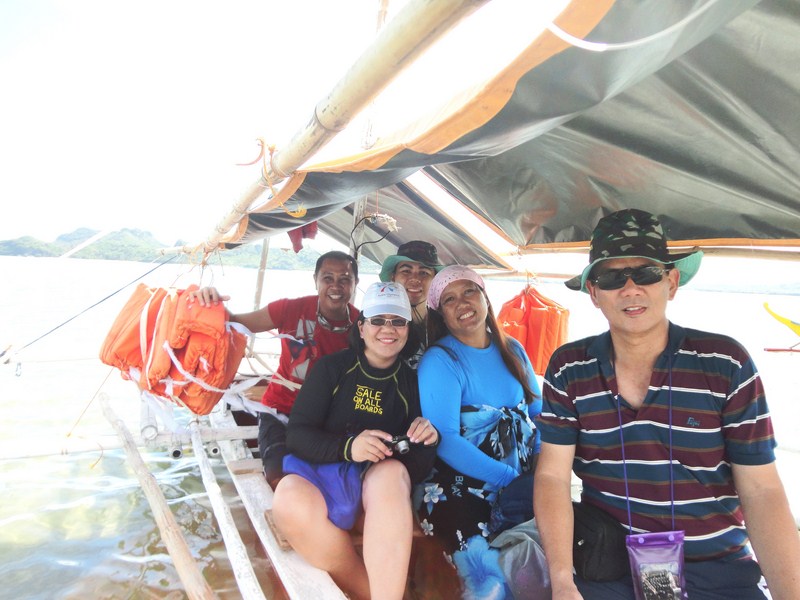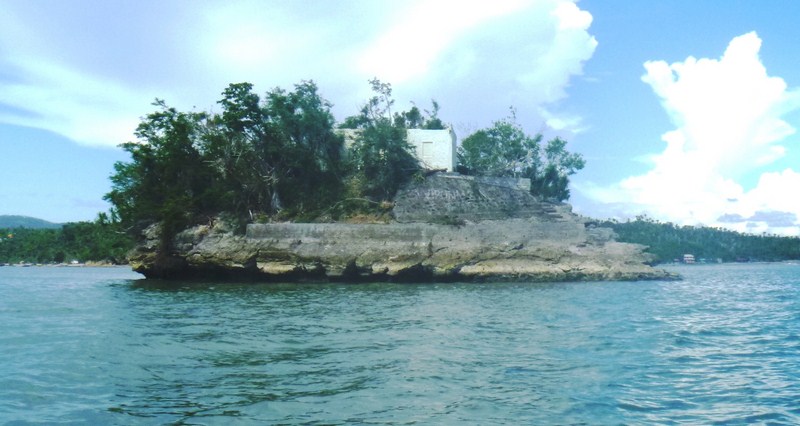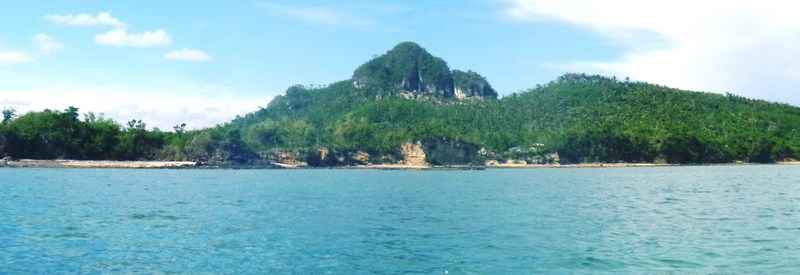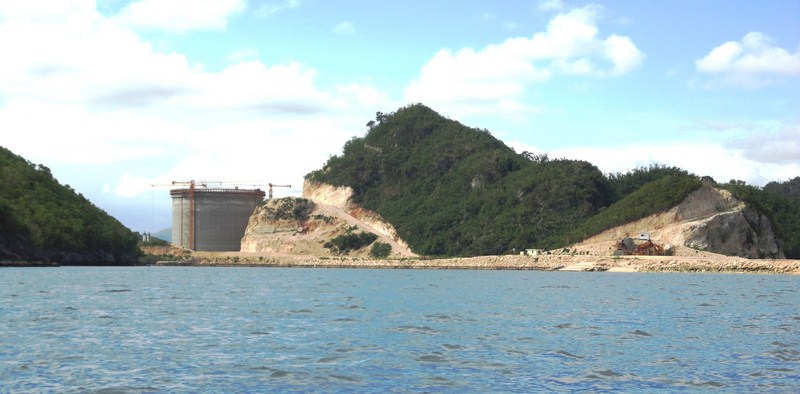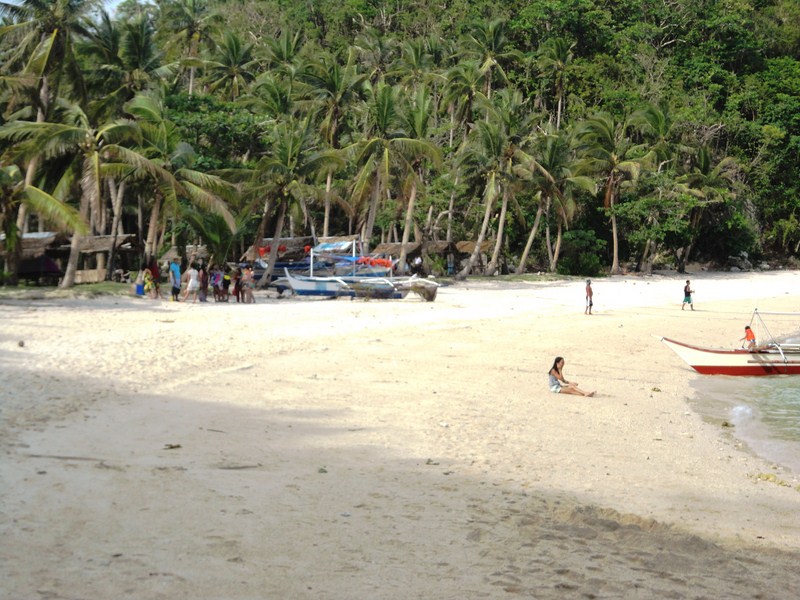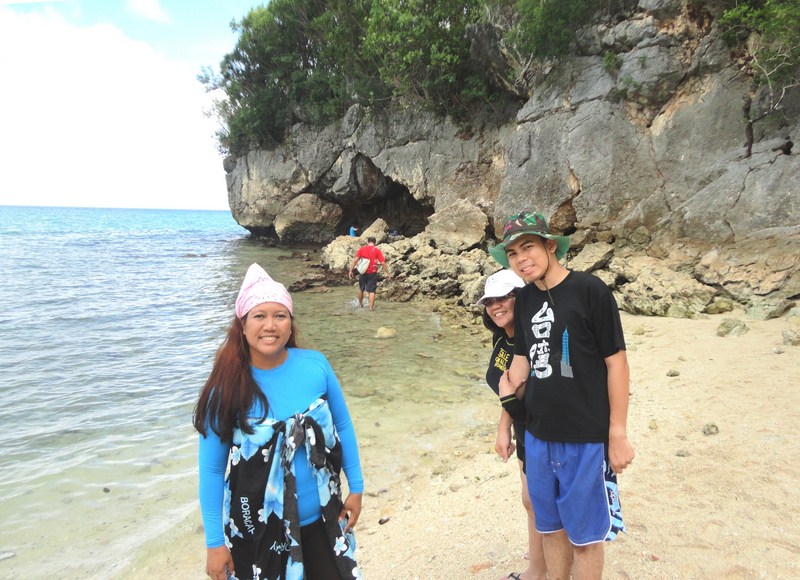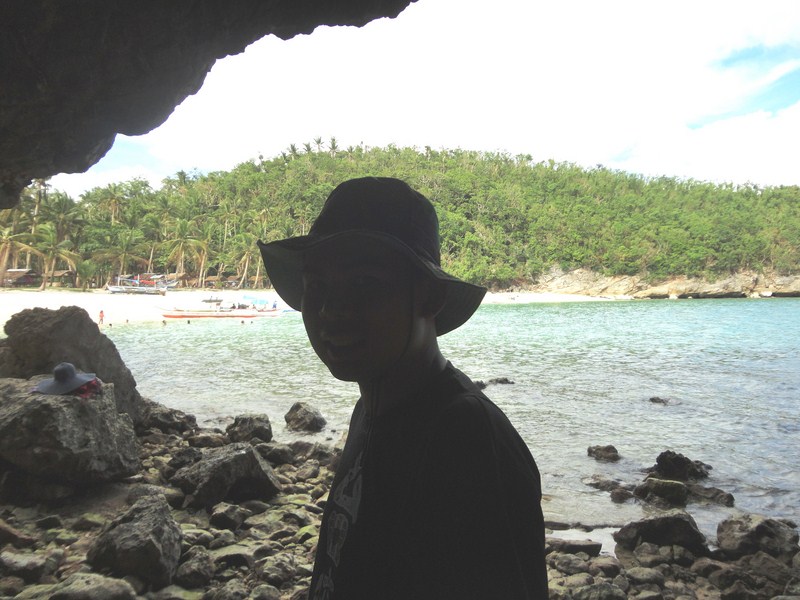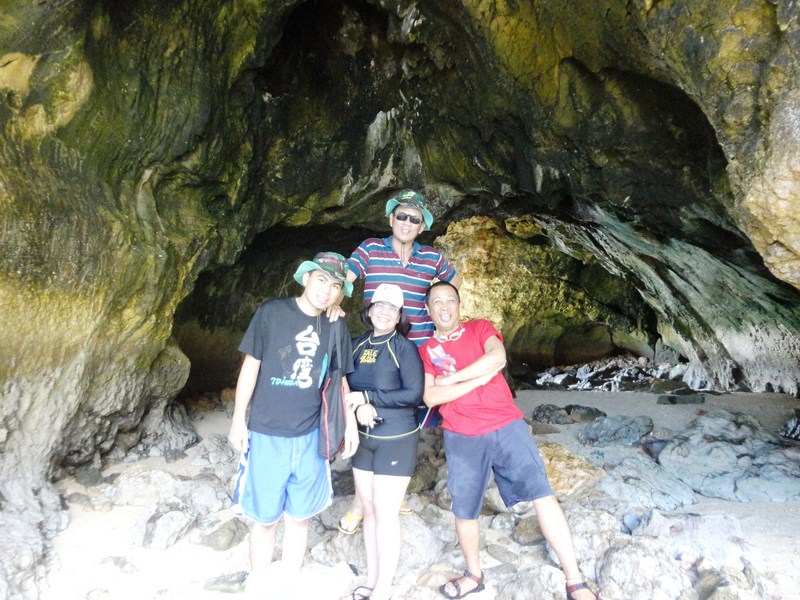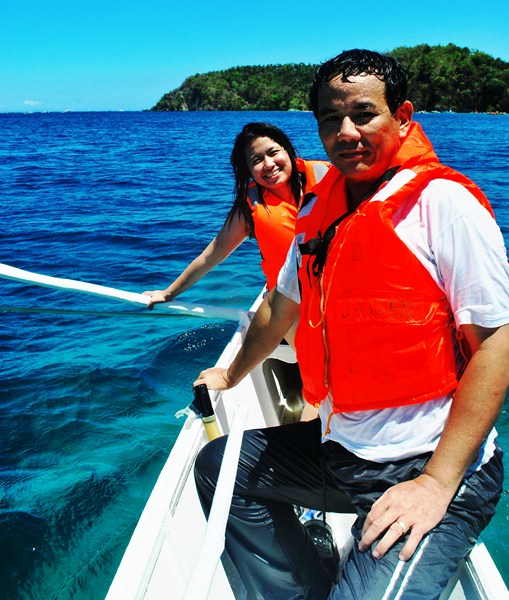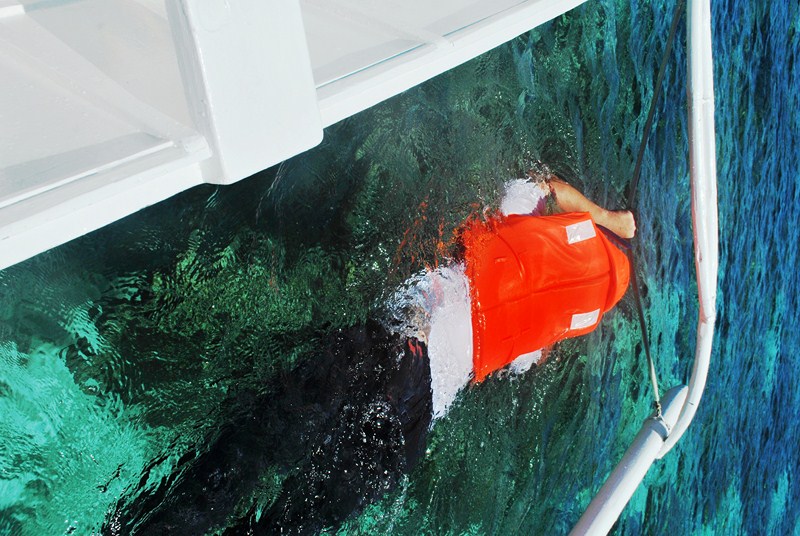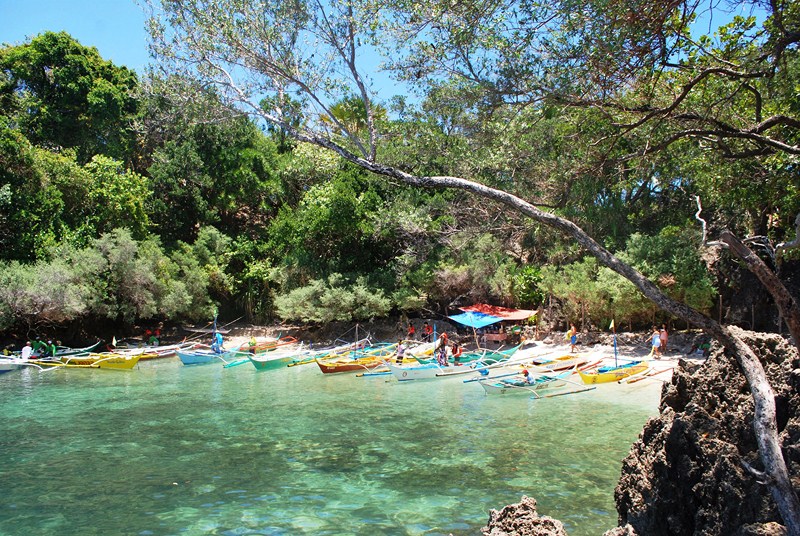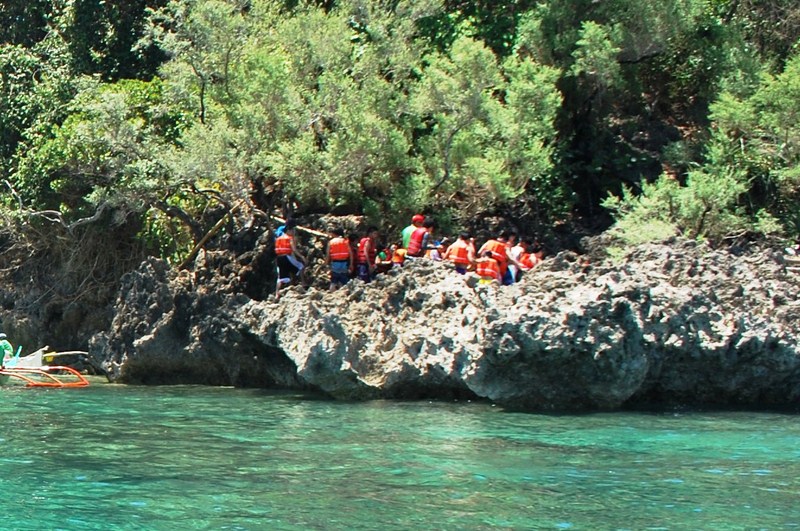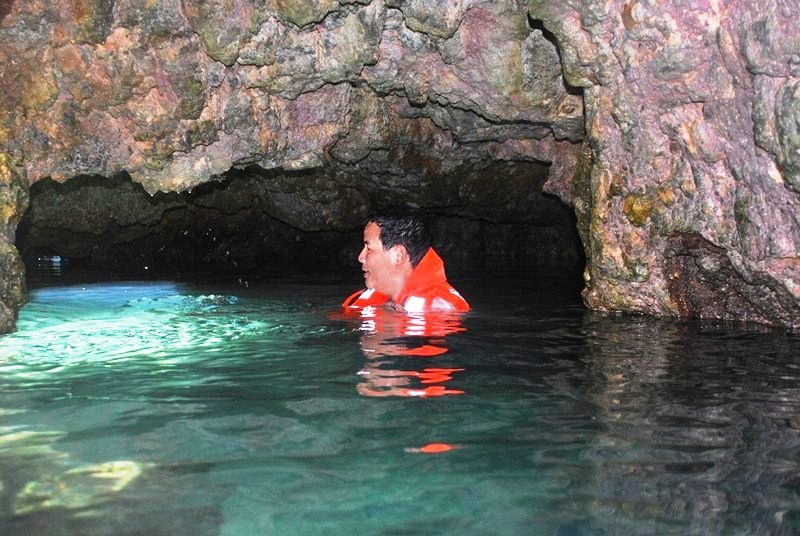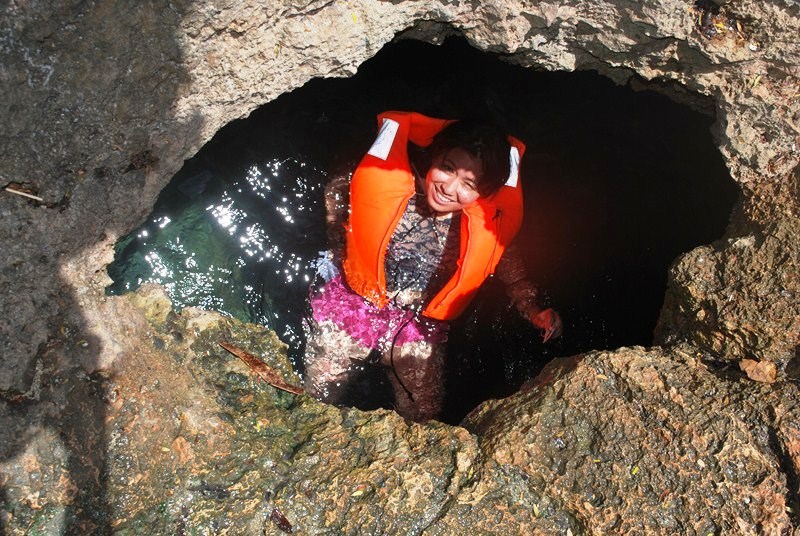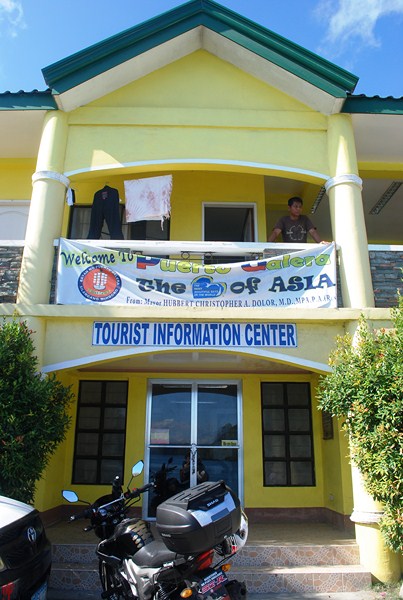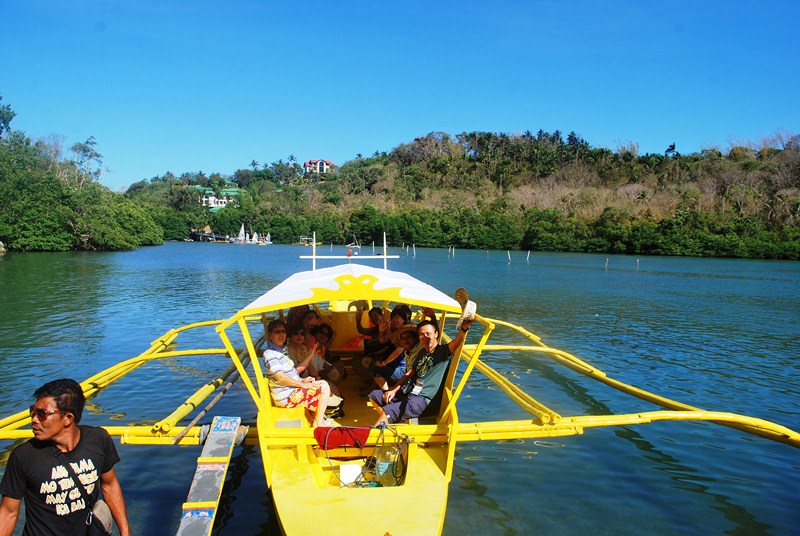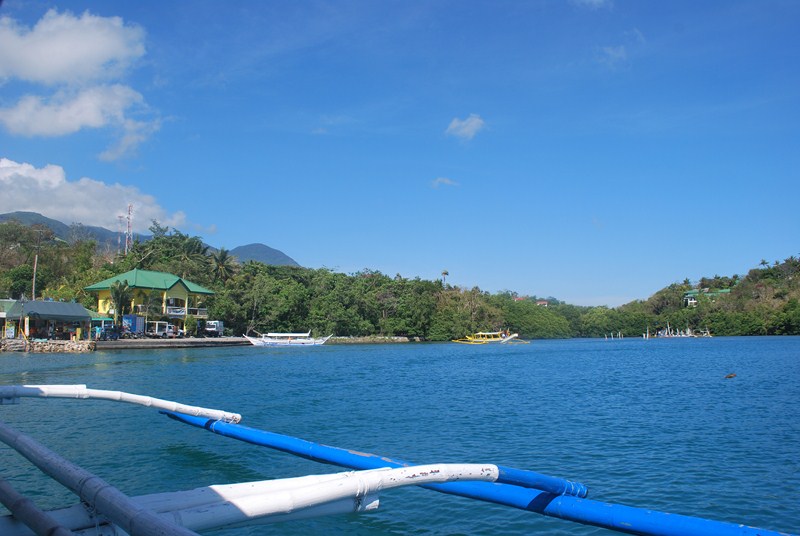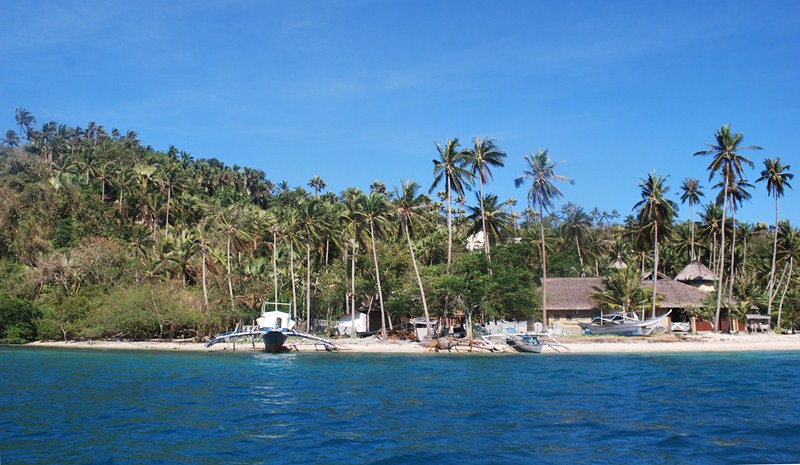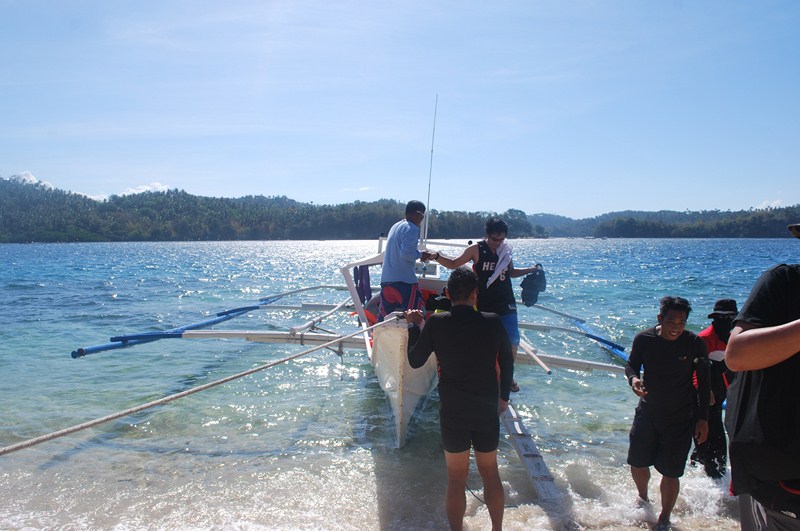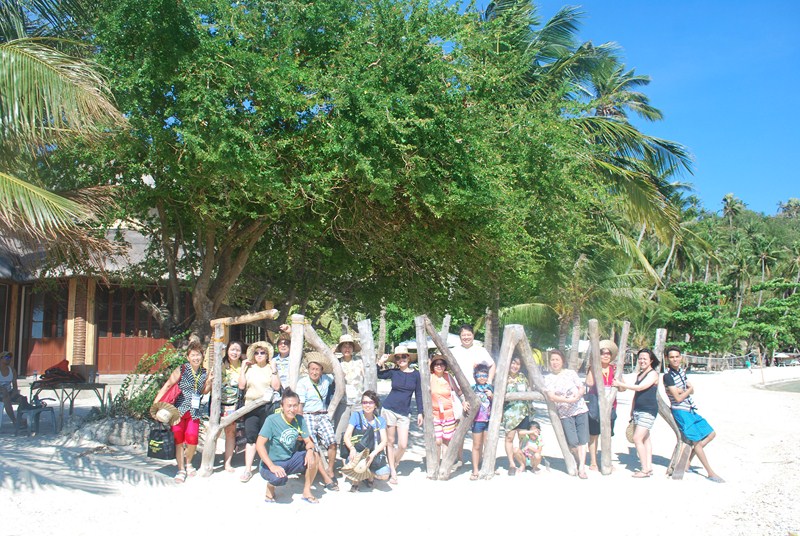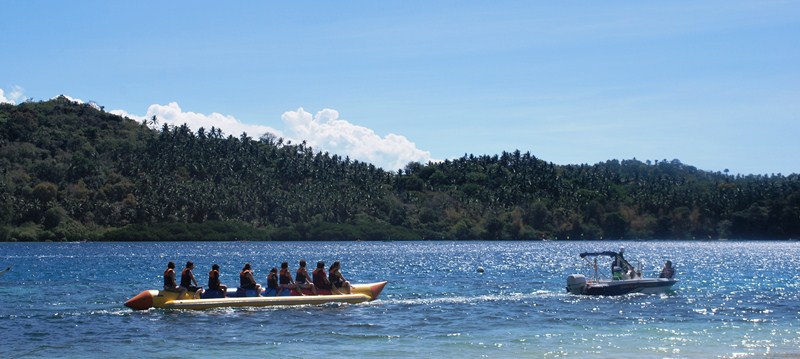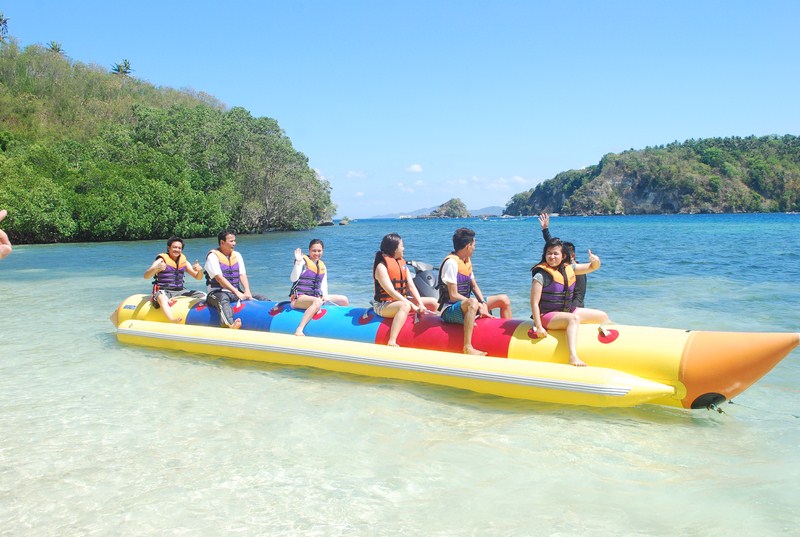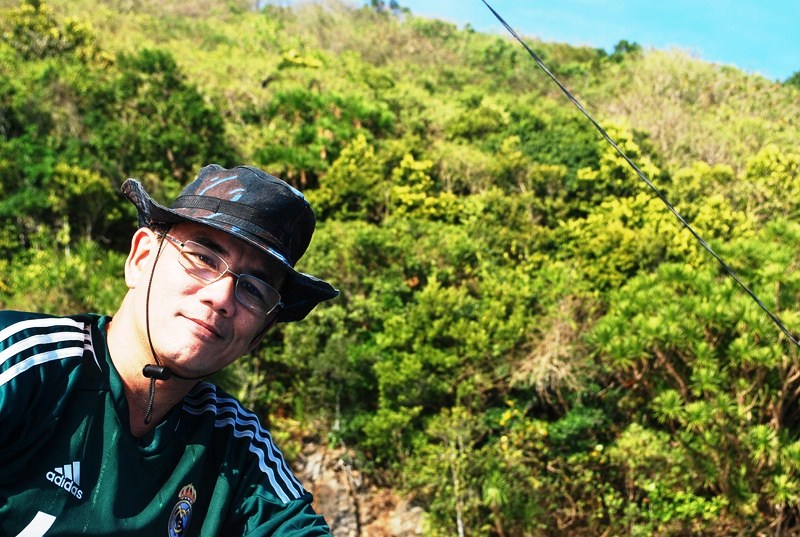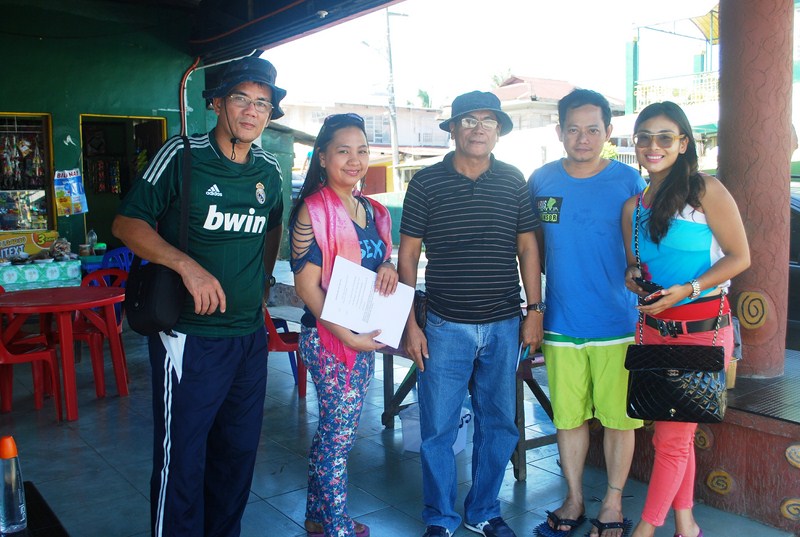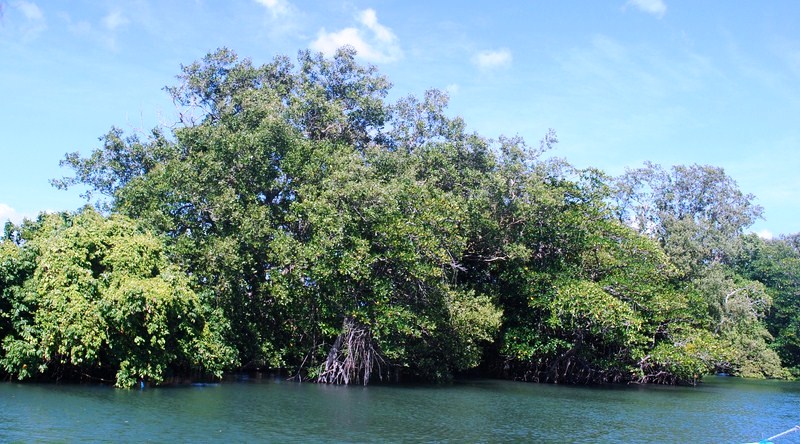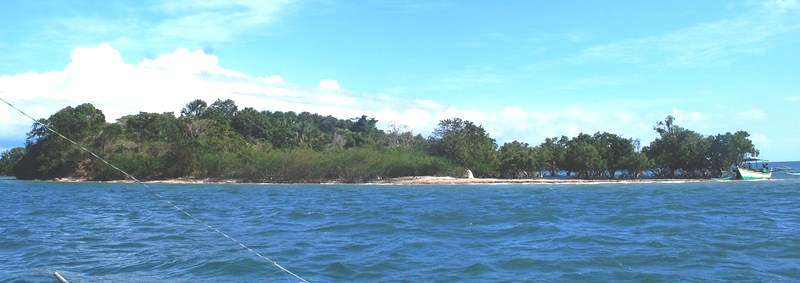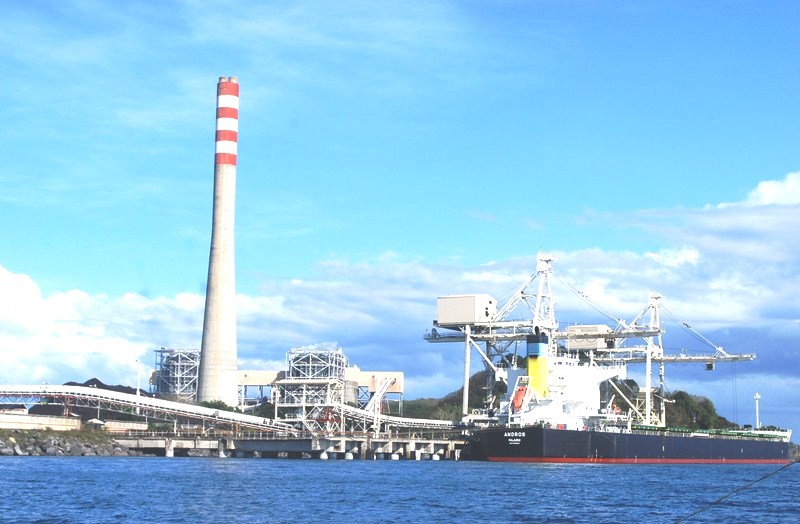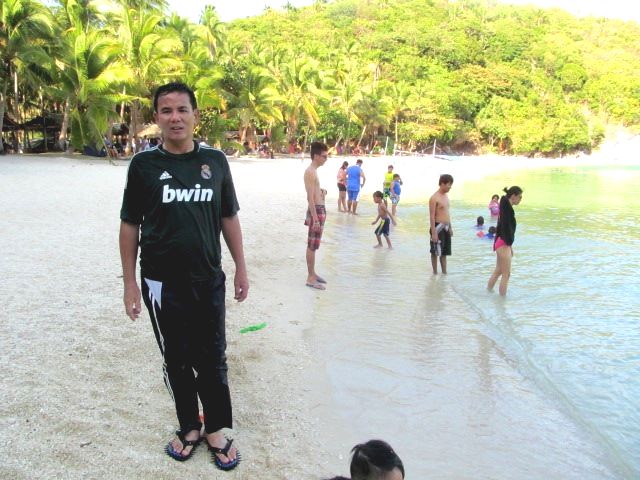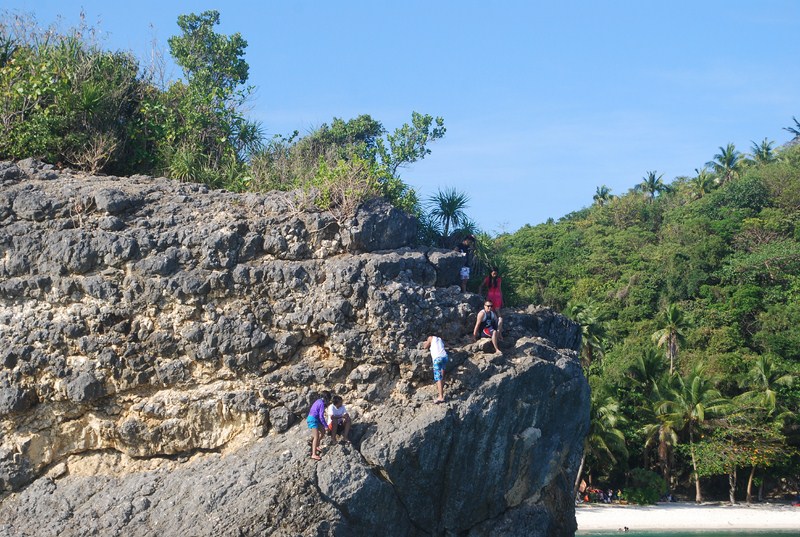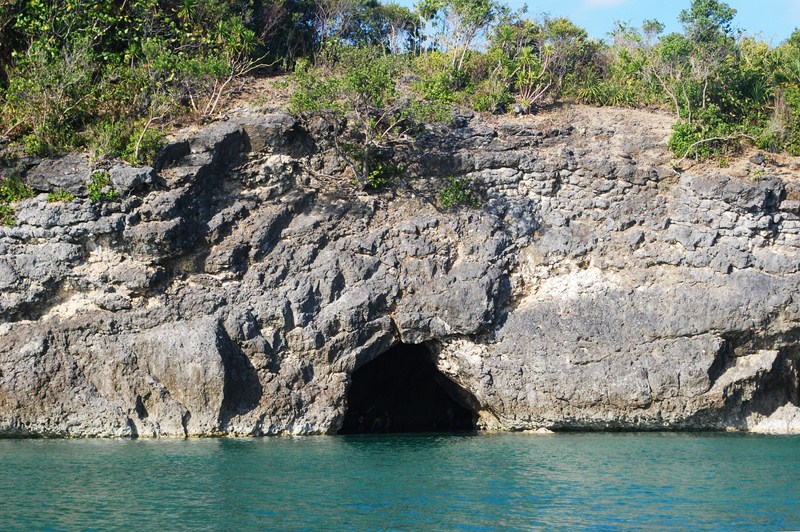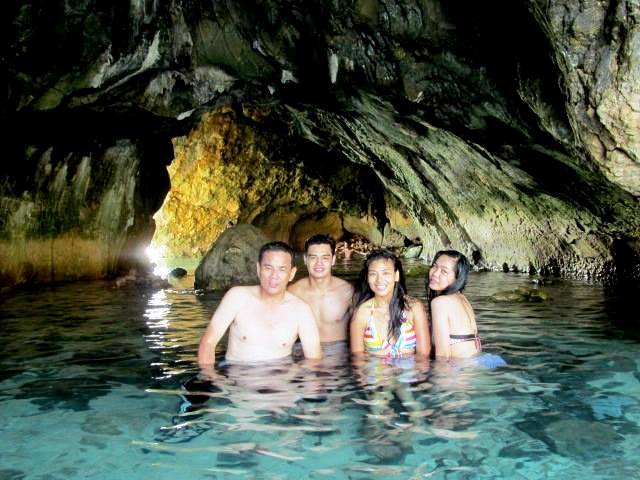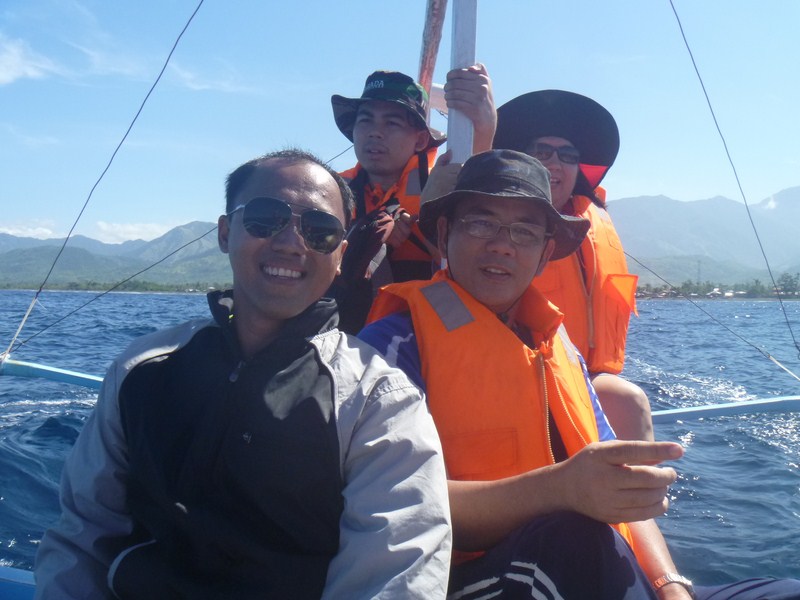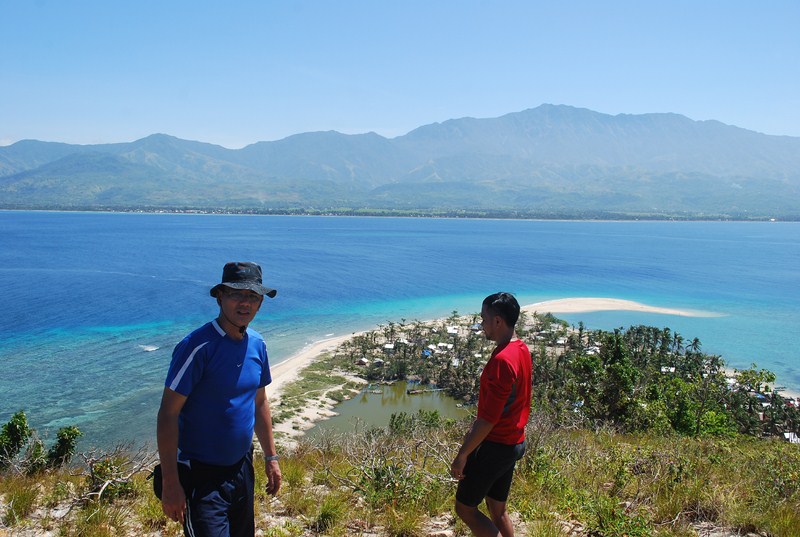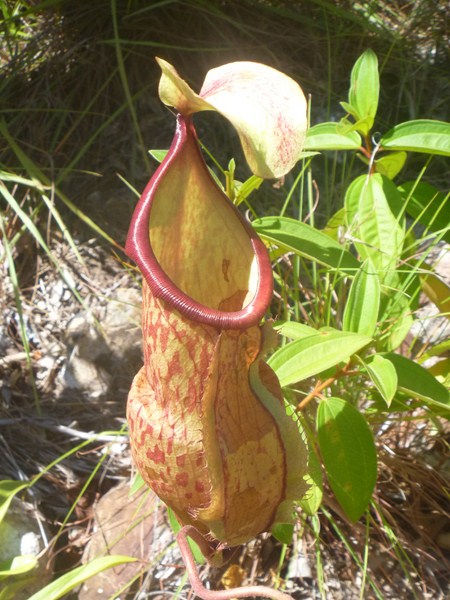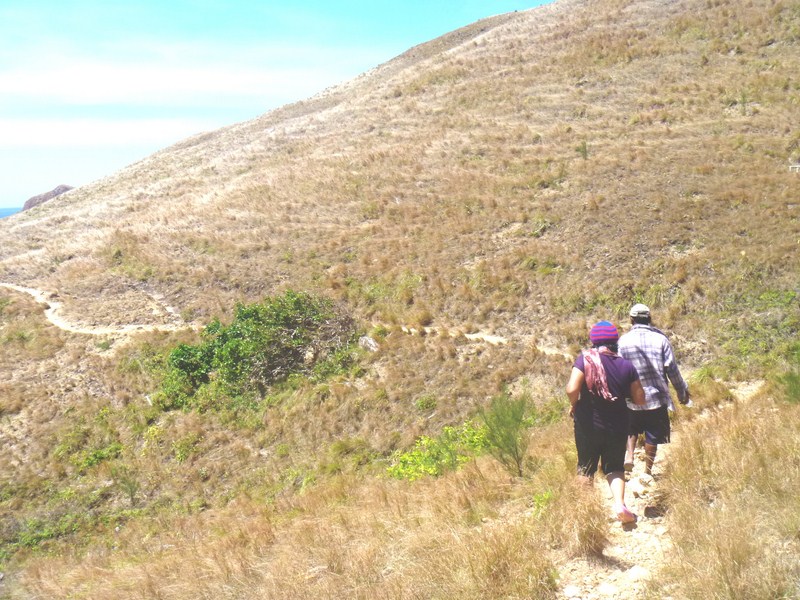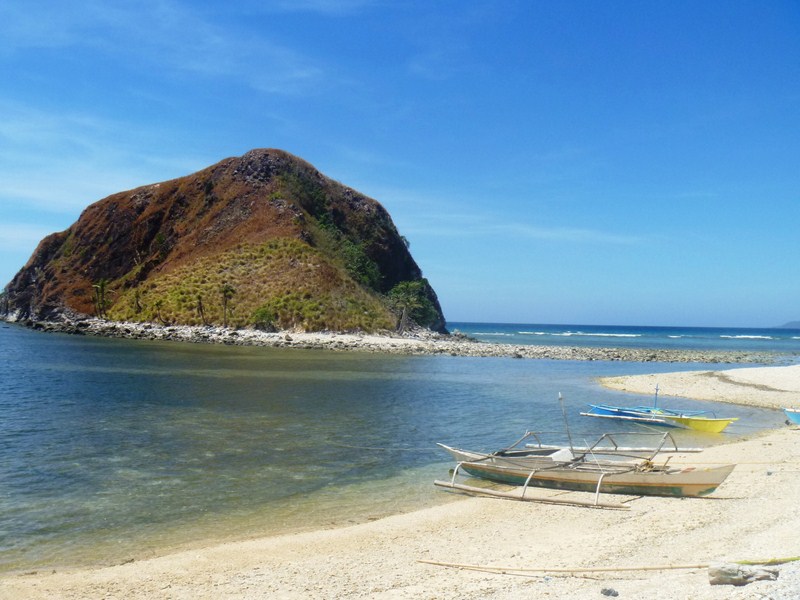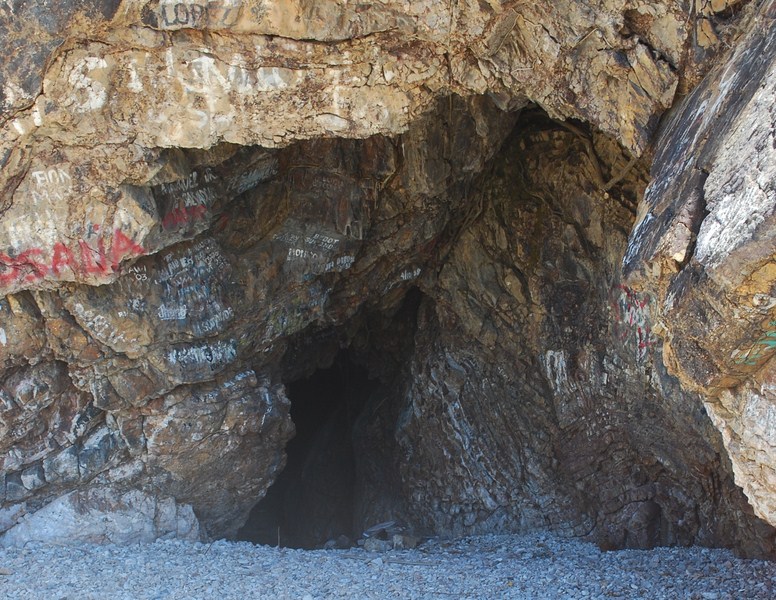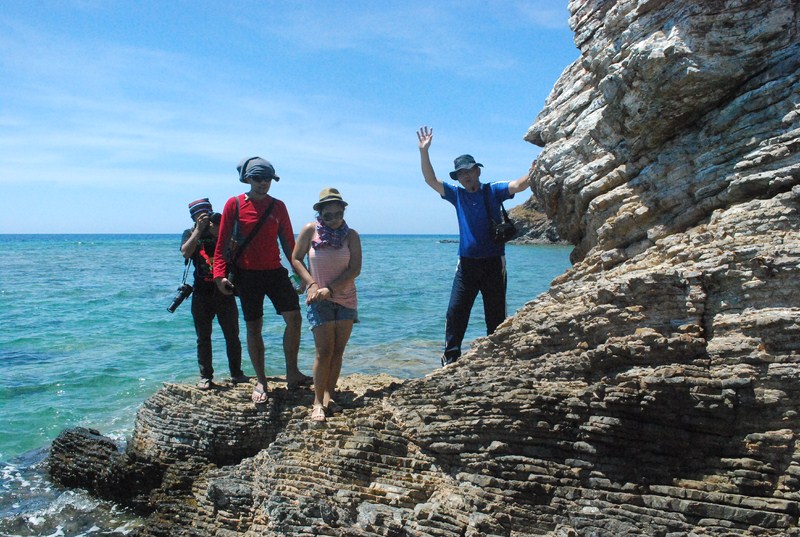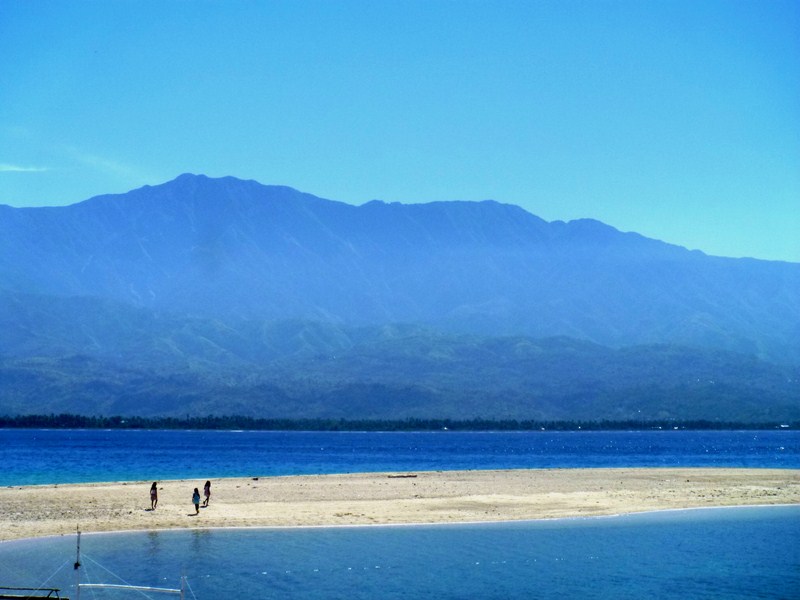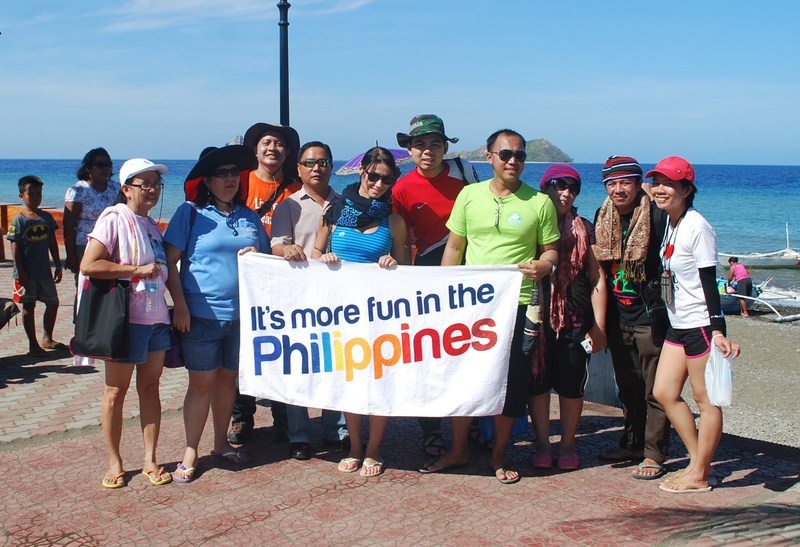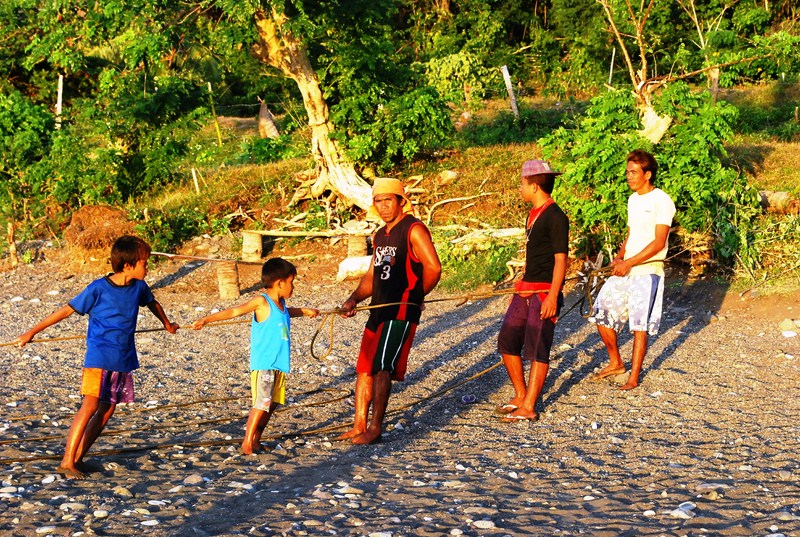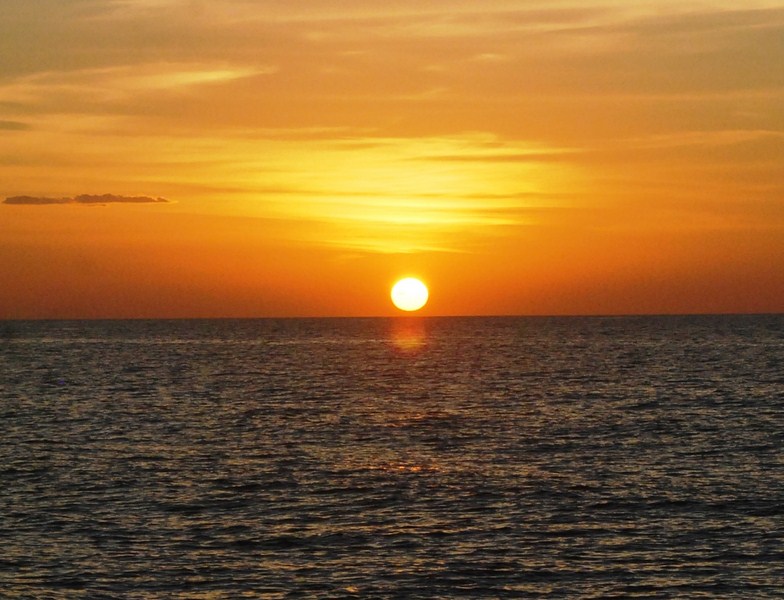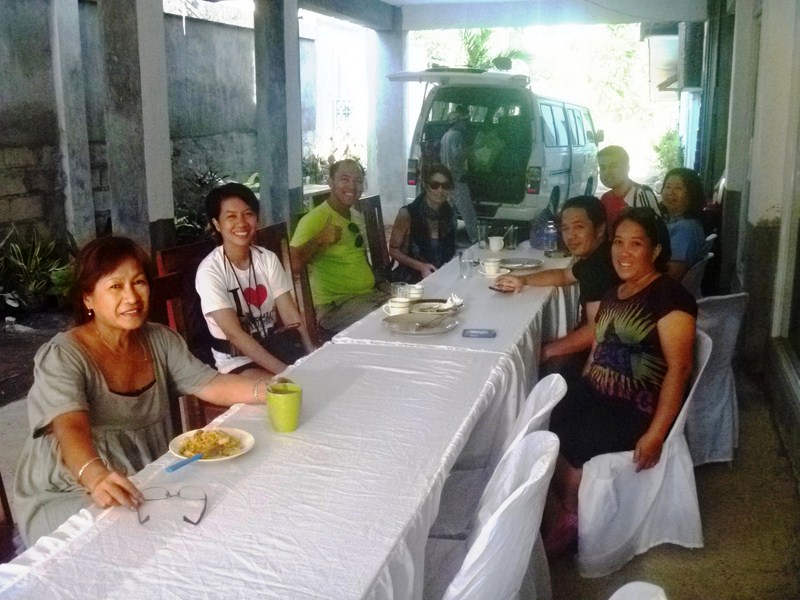After an early breakfast of corned beef and rice at Basiao Resort, Jandy, Maricar, Violet, Lanny and I double checked all the stuff we were to bring for our island hopping and beach camping (at Dampalitan Island) trip – tent, portable stove, rechargeable lamp, provisions, extra clothes, etc. Our boatman arrived by 8 AM and he started to load all our stuff.
Soon we were off to our first destination – Lipata Island. We arrived there after a short 15-min. boat trip. The island is the site of Borawan Beach, situated within lush mountains and rocky cliffs overlooking the Tayabas Bay in the Sibuyan Sea. Day trippers here are required to pay an admission fee of PhP80 per person (plus another fee if you will stay overnight).
When we arrived, the island was somehow pack with a number of overnight guests who stayed in tents (for those without one, these can be rented for PhP500). The island also has communal showers (PhP20) and toilets (PhP10) with fresh water. There are also a few nipa picnic huts for rent and a small store selling overpriced food and snacks.
The island’s name is said to be a portmanteau (blend) of the world-famous islands of Boracay and Palawan. Indeed, the beach has its own spectacular (though not as grand) rock formations like the limestone cliffs of Palawan but, sorry to say, not the crystal-clear waters and the fine, white sand of Boracay. The coarse sand beach is actually beige and it certainly isn’t a long stretch dotted with coconut trees. Instead, the shoreline of this short stretch of beach is dotted with huge rock boulders with a backdrop of high limestone walls.
Still, its towering, Palawan-like karst formations and limestone cliffs are perfect for rock climbing, bouldering and rappelling. It’s also a good venue for photo ops. Swimming here is done cautiously as there are a lot of sea urchins and jellyfish. The overnighters also told us that they saw 3 sea snakes near the huge boulder. Anyway, we didn’t plan to stay overnight on the island. After partaking of our packed lunch of adobo and rice, we left the island by 11 AM.
How To Get There: Go to Brgy. Marao in Padre Burgos and, from there, you can rent a boat bound for Borawan.

